Foam-based mattresses are more popular than ever, with so many types to choose from. Latex vs. memory foam vs. poly foam and more — where do you even start? This guide is going to compare two of the biggest players: latex vs. memory foam. Both of these materials are extremely popular in the mattress world, but offer very different feels.
Latex vs. Memory Foam – Our Video Analysis
What is memory foam?
Memory foam is a synthetic foam constructed with polyurethane and additional materials that create viscoelastic properties. Even if two different mattresses use memory foam in their construction, their respective firmness, feel, and response time can vary.
When you lie down and apply pressure to a memory foam mattress with your body, it will hug and contour your form. Response times (how quickly the mattress changes to pressure) vary based on the type of memory foam being used, but in general, memory foam is going to respond slower than most other foams.
The best memory foam mattresses can take on many different firmness levels and feels. One thing to remember about memory foams is that all memory foams are polyurethane foams, but not all polyurethane foams are memory foam.

What is latex foam?
On the opposite end of the spectrum, you have latex foam. Latex has more elasticity and a more generalized hug than memory foam. When used in a mattress, this means a faster response time and more bounce (which has helped a few latex mattresses land on our best mattress for sex list). Latex foam found in the best latex mattresses comes in natural, synthetic, and blended varieties.

Latex Foam Breakdown
Construction
Latex foam can be constructed from three different types of materials: all-natural latex, synthetic latex, or a blend of natural and synthetic. There are also a number of different ways to manufacture latex. However, the two most common types by far are the Dunlop and Talalay processes.
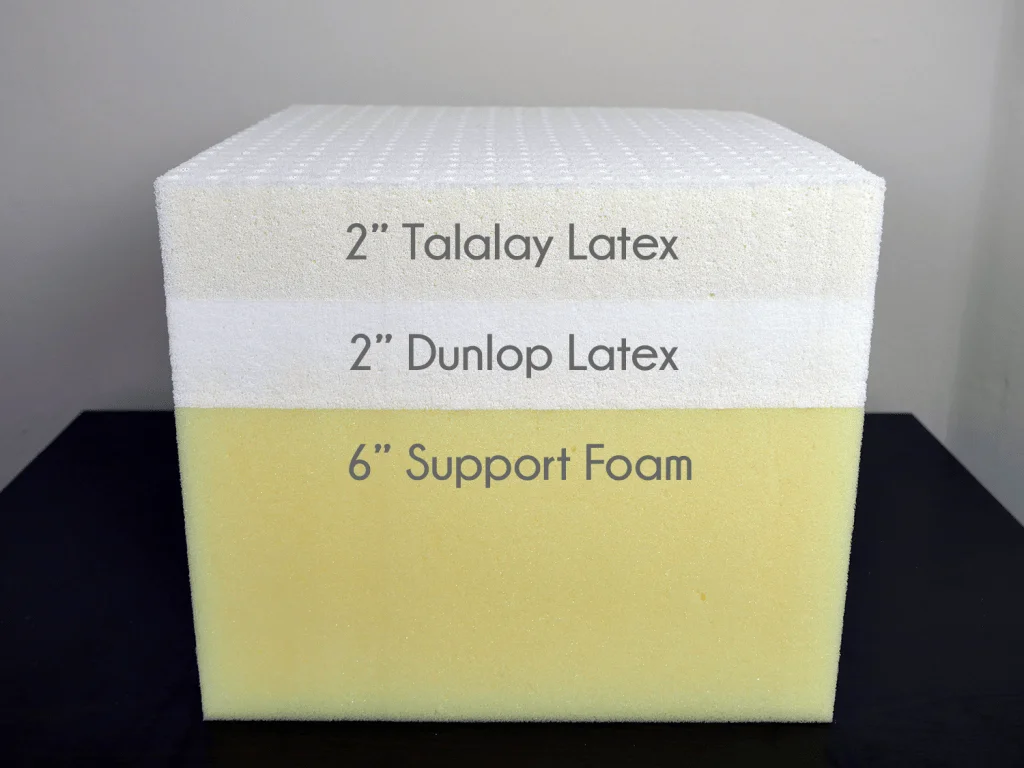
These materials and manufacturing processes can be used in any number of combinations. For example, you can have a natural dunlop foam, a synthetic dunlop foam, a natural talalay foam, or a synthetic talalay foam. Some manufacturers advertise the technique used to make the foam, while others choose to focus on what the foam is made of.
Let’s dive a bit further into the various materials and manufacturing processes of latex foam.
- Natural latex (material) only uses raw latex, which is harvested from rubber trees and naturally processed to create the foam layers. For sleepers looking for the best organic mattress, natural latex can be a great option. A certified organic natural latex mattress uses the purest materials and construction, and there is minimal off-gassing.
- Synthetic latex (material) can be made from a variety of different synthetic materials. But it’s usually constructed from styrene-butadiene rubber (SBR for short). This latex can have a similar feel when compared to an all-natural latex mattress. That being said, some folks describe synthetic latex as having less bounce when compared to an all-natural latex. A synthetic latex is also not going to have quite the lifespan and durability of an all-natural latex.
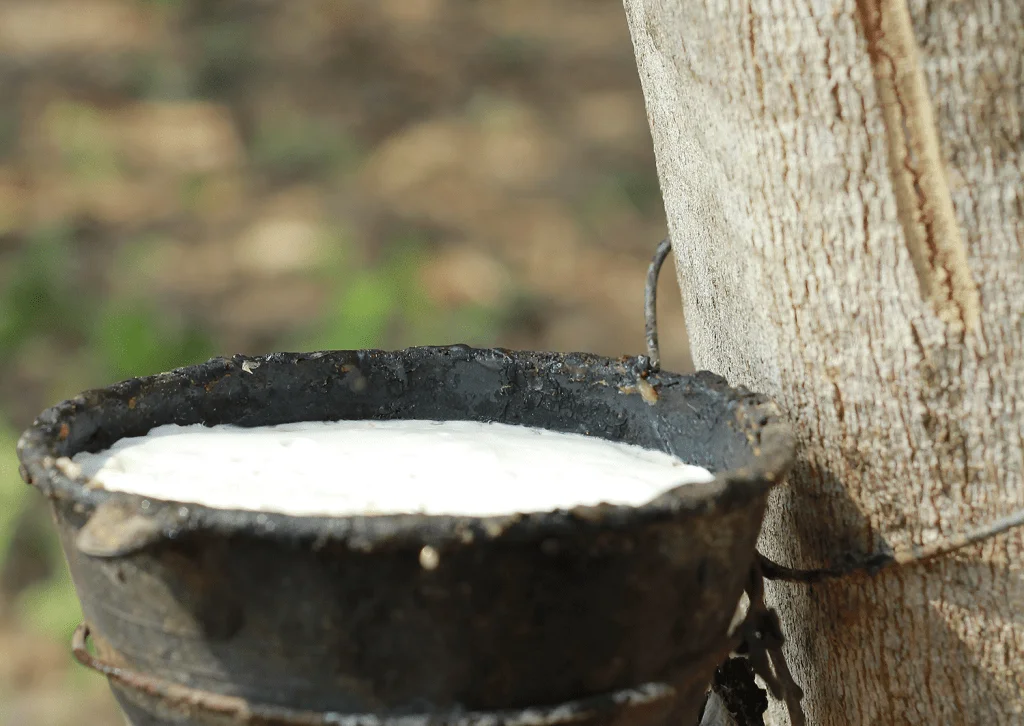
- Dunlop latex (manufacturing process) refers to latex that is poured into a mold as one complete pour. This technique involves a bit of settling, which results in this foam feeling denser along the bottom and a bit softer towards the top.
- Talalay latex (manufacturing process) refers to latex that is poured into a mold, but is only partially filled. Air is then added to the mold by vacuum, which expands the latex to create the complete form. This technique results in latex that is less dense (and by some estimations less durable), but more consistent in feel from top to bottom.
Feel and Comfort
One of the most important differences between latex and memory foam is the way it contours and hugs your body. Memory foam slowly contours to your body, trying to mold to a very exacting shape. Latex, by contrast, allows sinkage and compression. But it’s important to note that it’s more of a generalized compression around the body. You won’t get the same type of exacting contour with latex that you do with memory foam.
For many sleepers, this helps to prevent the stuck or overly enveloped feel that can sometimes accompany memory foam.
In addition, latex foam will generally have less heat retention and better cooling. Aerated latex foams are a way to improve cooling even more. These latex foams have air pockets integrated into the molding of the foam and can make latex mattress some of the best cooling mattresses on the market.
So in short, opt for a latex mattress over memory foam if you prefer:
- A lighter feel
- More bounce
- Faster response time
- Less hug
- Better cooling
- More generalized compression
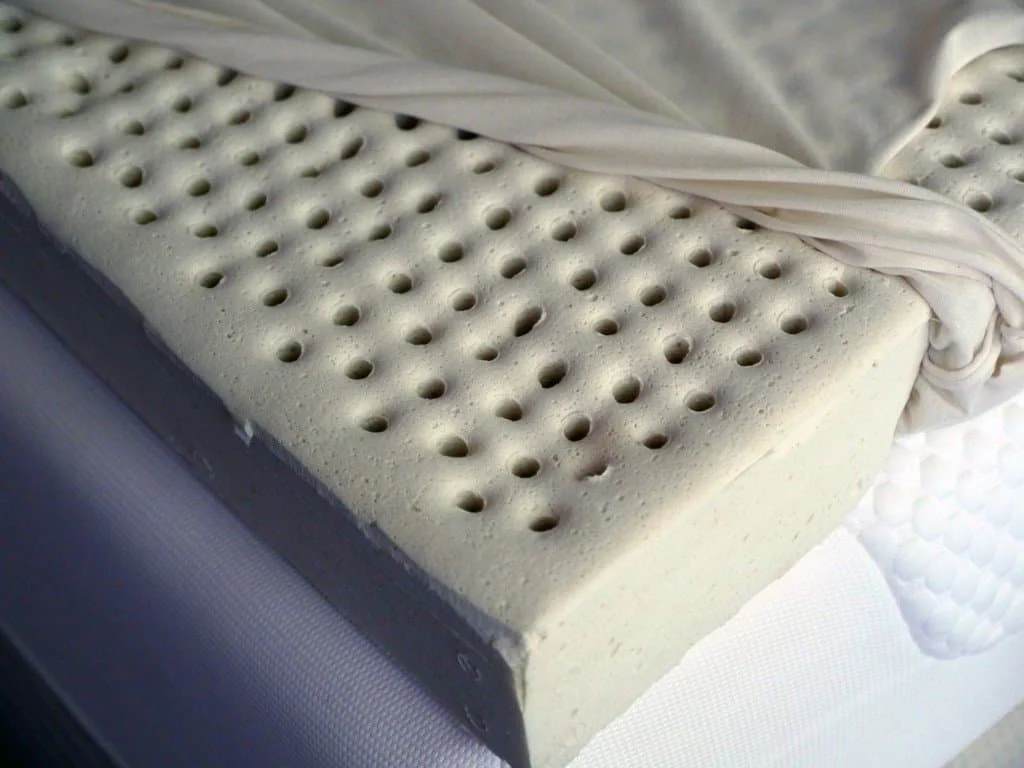
Of course, if you decide on a latex mattress, you still have some more specific decisions to make. Between all-natural latex and synthetic latex, the feel is going to be similar. The benefits of all-natural latex are going to include the pureness of the materials and longevity. The benefits of synthetic latex include the lower cost. Natural latex mattresses can range from $1,000–$4,000, while a synthetic or blended latex gets you closer to the $700–$1,500 mark.
Memory Foam Breakdown
Construction
Memory foam is constructed with polyurethane that has added materials, which create that viscoelastic feel when you lie on it. It’s important to note that memory foam is not a single material, but a wide classification for a group of similar foams.
Memory foams can be:
- Virtually any level of firmness
- Partially or fully infused with gel, gel beads, copper, graphite, or other materials
- A variety of densities — most commonly being 3.0–5.0 PCF
- A variety of response times, with the most common being slow to average
- Aerated (holes in the top), convoluted (channels in the bottom), or molded, cut, or formed in a variety of other ways
Memory Foam Mattress Example – The Nectar
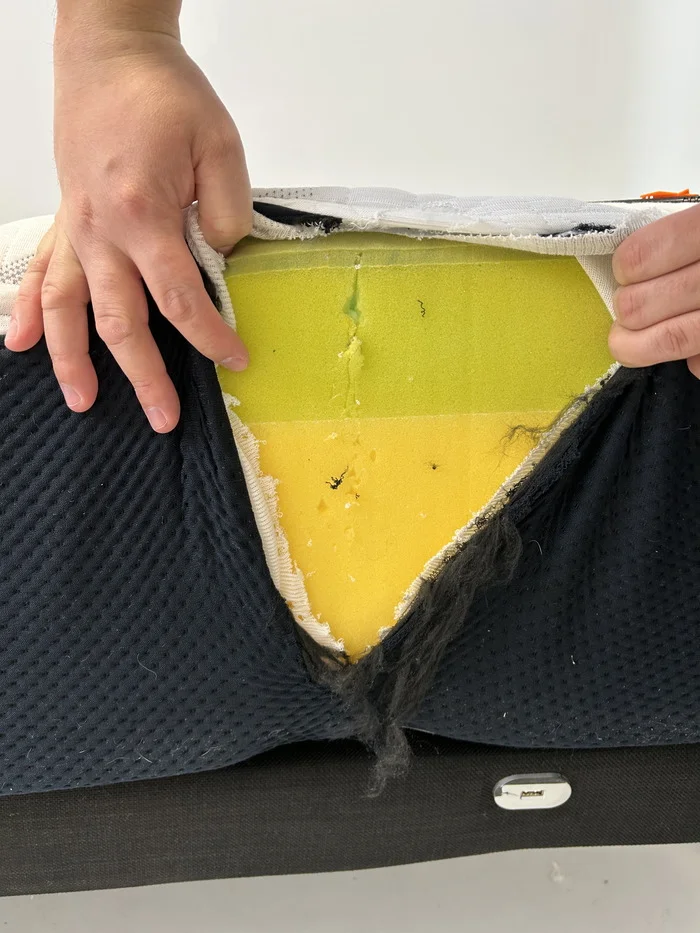
Above are the exposed layers of the Nectar mattress. This is a classic memory foam mattress. It has a slower response time than a latex mattress and great contour. Because of the deeper hug and high-density foam in the base layer, the Nectar — like many memory foam mattresses — would normally have a tendency to overheat. But the brand counteracts any potential heat retention issues with a cooling cover, which can assist with temperature regulation.
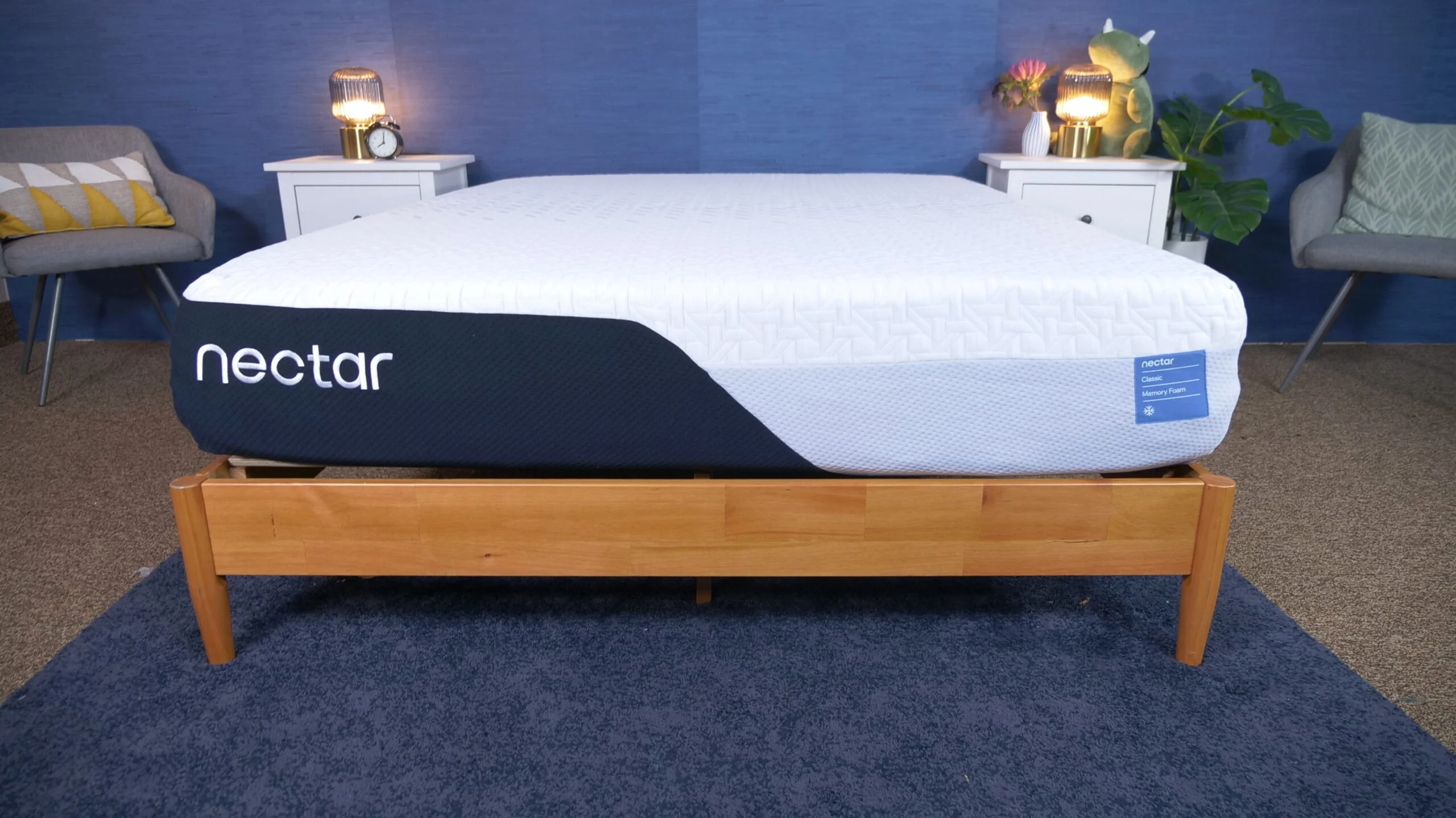
Nectar Mattress

Product Details
Our Recommendation
Financing Options
Financing options are available for this mattress.
Memory Foam Mattress Example – The TEMPUR-Cloud
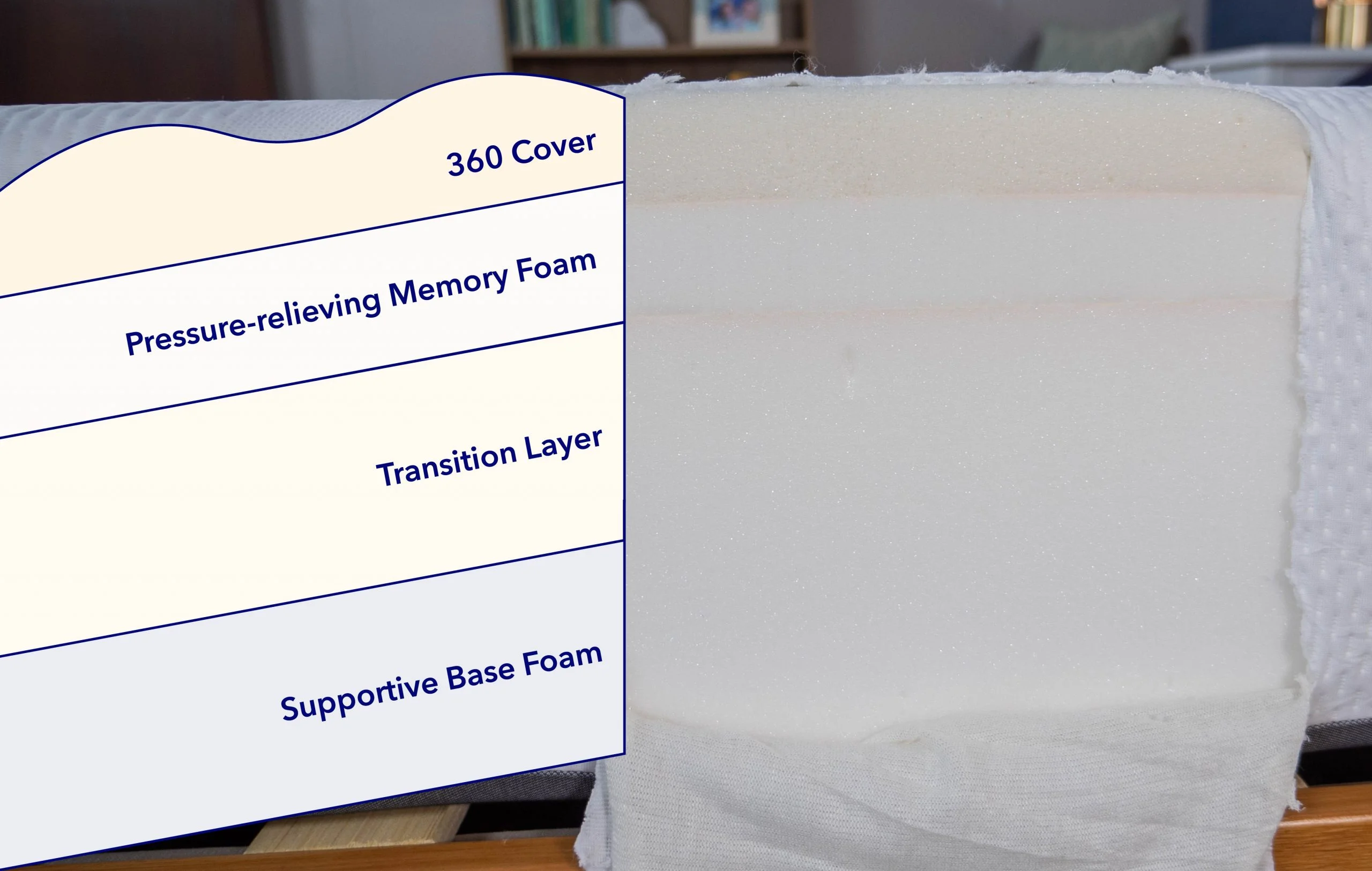
Above are the exposed layers of the TEMPUR-Cloud mattress. This is an example of a high-density memory foam mattress. It has a traditional feel, with very slow response and pronounced hug / contour. It sits on a layer of supportive base foam.
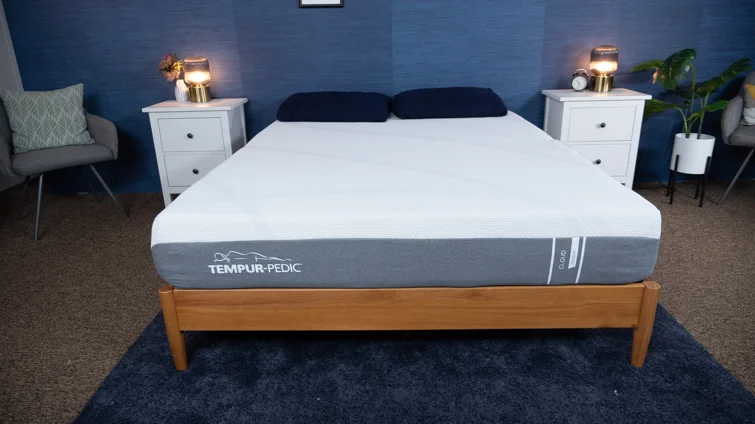
TEMPUR-Cloud Mattress

Product Details
Our Recommendation
Financing Options
Financing options are available for this mattress.
Feel and Comfort
The feel of memory foam is very distinct, making it one of the most recognizable foams in mattress construction. The deep pressure relief and hug makes memory foam a nice choice for side sleepers or people who suffer from pressure-point-related pain. One of memory foam’s greatest pitfalls may be heat retention.
Cooling can be a problem for memory foam mattresses due to that deep sinkage and contouring, which can result in less air flow and more material coming into contact with your body.
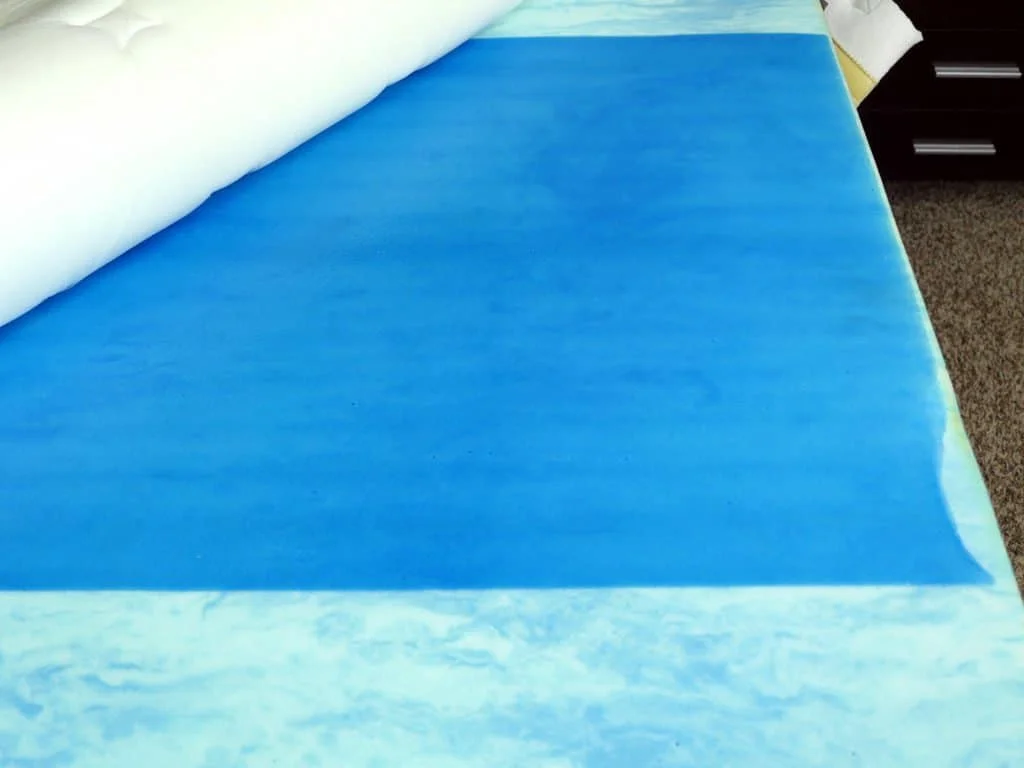
Mattress designers can counteract issues with heat retention a number of ways, including:
- Gel layers
- Gel infused foam
- Convoluted foam with cutting or molding channels to improve airflow
- Cooling fabrics and fibers within the cover
- Special foams with more open foam cells
- Active cooling features
There’s a lot to be said about cooling within the mattress, and we don’t have room for it all here. However, what’s most important to understand is that memory foam does not universally mean that the mattress is warm. There are many different memory foam mattress designs that manage heat retention issues quite well.
While the rate of response time can vary for different memory foams, it is generally more of a molding foam that conforms to the weight of your body. When used in a mattress, this slow response time provides deeper body contouring, greater hug, and more pronounced sinkage.
Should You Buy a Latex or Memory Foam Mattress?
So here’s the big question: latex vs. memory foam — which one is right for you?
I Would Recommend Latex Foam to Sleepers Who:
- Want more bounce – Latex foams are significantly bouncier than memory foam, which prevents that “stuck” or “sinking” feeling. It also can be a nice touch for amorous activities (see our roundup of the best mattresses for sex).
- Want a faster response time – Active sleepers may find a faster response time to be more beneficial. A latex mattress is going to move and respond as you do throughout the night.
- Want a more natural mattress – Natural latex makes for a very “organic mattress” since it can be produced with only natural rubber. A natural or organic latex mattress is commonly considered hypoallergenic as well.
I Would Recommend Memory Foam to Sleepers Who:
- Want deep compression support – Generally speaking, the level of sinkage on a classic memory foam mattress is going to be significantly more than what you will get on a latex mattress. More sinkage translates to more body contouring and hug.
- Want a slower response time – If you are not an active sleeper, you may appreciate a mattress with a slower response time. This allows you to really sink into the mattress and get that deep pressure relief.
- Want varied materials – Whether you want to stick with traditional memory foam, gel memory foam, responsive memory foam, or other varieties, there is a wide range of options to choose from. Each type of foam has been created to meet the needs of different sleepers, all while maintaining that viscoelastic feel that is notable in all memory foams.

Livvi DiCicco
Staff Writer
About Author
Livvi DiCicco is a Staff Writer and Certified Sleep Science Coach. She has been writing, editing, and researching sleep-based content for over a year. After graduating from the University of Iowa with a degree in English & Creative Writing, she decided to work in the digital marketing field, continuing her creative works on the side. Her other interests (besides napping and writing) include digital art, history, and boba tea.
Combination Sleeper



























